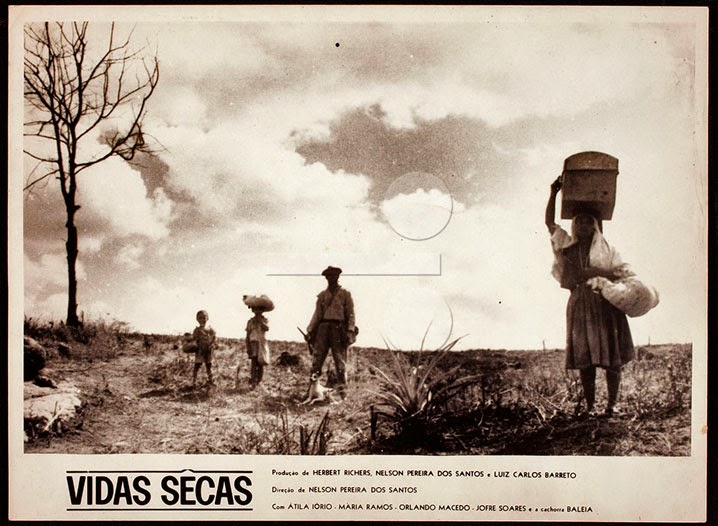
Latin American Culture in Historical Perspective
Working with a small group of classmates, you’ll be in charge of leading teaching the class about a key Latin American film. Your small group will:
- develop a written guide to orient your classmates as they watch your chosen primary film.
- presenting a 3-5 minute pre-recorded overview of your film to introduce the creator, historical context, and key themes the class session before it is discussed.
- lead discussion on the assigned day.
You’ll receive two evaluations: one for your group’s meeting the assignment specifications, and a second focusing on your personal contribution to your team’s success.
Learning Goals: You Will
- Identify key people and events that shape Latin American history and culture.
- Analyze primary sources reflecting diverse perspectives of Latin America.
- Use the skills of historians – including research, analysis, and interpretation – to create your own interpretations of Latin America history and culture.
- Clearly communicate your ideas in multiple formats (written, oral, digital).
LA Voices Project Specifications
Group Planning & Collaboration
Sign up for your film on Moodle.
Meet with your group to plan your topic and schedule. This should include your:
- Expectations for each member’s contributions.
- Timeline for writing & recording your 3-5 minute video preparing your classmates to view your film.
- Timeline for designing, revising, and finalizing your viewing guide.
- Timeline for drafting discussion questions.
- Plans for organizing your class discussion session.
Complete your Team Contract by the end of the day on Friday, January 27.
Make sure that everyone in your group has a voice, and you are listening to their contributions.
Source Introduction Video
- 3-5 minute introduction covering:
- a concise description of your film, emphasizing why your peers should watch it
- information about the director and how the source reflects their point-of-view
- information about the historical context for the film
- conclusion linking the film to class themes
- Your video should demonstrate a skillful approach to digital storytelling. Form matters.
- For your audio narration, make sure that you vary sentence length and structure, and that you favor active verbs and descriptive language. The style should be polished, but doesn’t have to be uptight/excessively formal.
- Make sure your audio narration is clear, with good pacing and volume. This may require multiple takes: don’t try to rush this step.
- Take advantage of the college’s Digital Studio! You can check out high-quality microphones, use the sound studio, or edit your final video on their larger screens.
- Choose images and audio to engage your viewer and enhance the larger impact of your analysis.
- Use images from a variety of sources, perspectives, and mediums.
- Make sure that all of your images are clear (no blurring / pixelation) and free from watermarks (stamps that say Getty or Alamy, for example). Crop images to emphasize your point.
- Your image timing needs thoughtful consideration. Images should remain on the screen for at least five seconds, but no longer than 20 seconds.
- No clip art or crazy transitions.
- You can use elements like the Ken Burns effect if they enhance your point on a particular slide.
- Be consistent with your font choice, size, and basic layout.
- The project can be created using your choice of software (Pptx, Canva, iMovie), but must be exported as an mp4 file and uploaded to our class LA Voices stream 3 days before your team’s day to lead class discussions.
- Include a final slide with your bibliography (for images and sources of information)
Viewing Guide Handout (pdf)
This must include:
- Title with your sources’ author, title, year created, and country
- An image representing the film
- A one-sentence description of the film that explains why your peers should watch it
- A paragraph with the biography of the director
- A paragraph about the historical context for the film
- A paragraph with information about the film’s reception (national & international)
- Character list with the names and a few words describing key characters
- A list of 8-10 questions you want your peers to keep in mind to prepare for class discussion
- Suggestions of 2-3 resources related to the film with full citations (interviews, reviews, history articles, etc.)
Email your reading guide pdf to Dr. Holt as early as possible, but no less than 3 days before your class discussion.
Class Discussion
- Come to class prepared to facilitate a productive discussion for 35 minutes.
- Within 24 hours after your discussion session, complete the group work assessment on Moodle.
Evaluation
You will be evaluated both on your group’s work leading discussion and on your contributions to the project (as evaluated by you and your peers).
Students completing the “A” Contracts need “excellent” group work scores, the “B” contract “good” or higher scores, and those completing the “C” contract need “satisfactory” or higher scores.